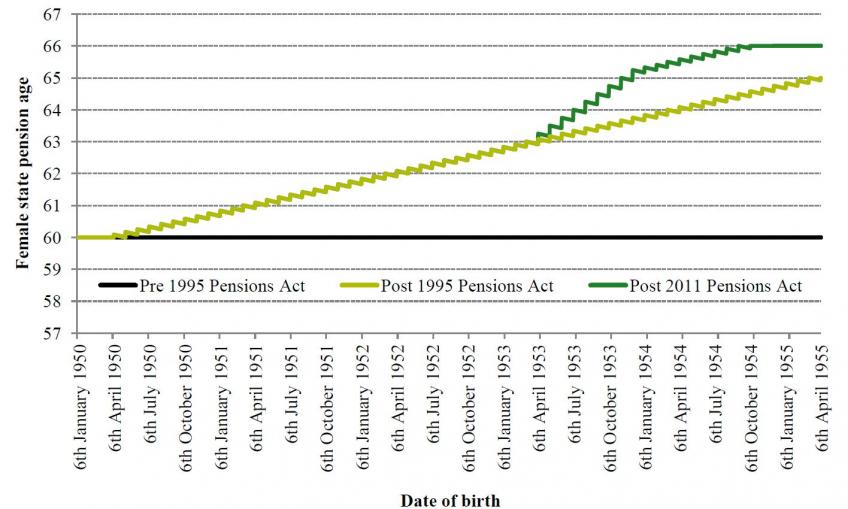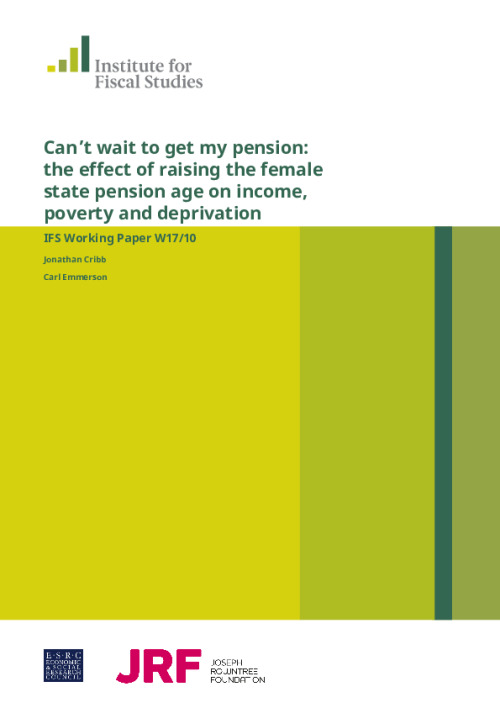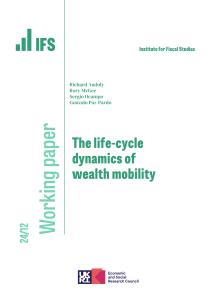The earliest age at which women can receive a state pension in the UK (the ‘state pension age’) has been increasing since 2010. We use a difference-in-differences methodology, exploiting the gradual increase from age 60 in 2010 to age 63 in 2016, to estimate the impact of the reform on women’s incomes, income poverty rates and measures of material deprivation. We find that, on average, increased earnings partially offset the loss of state pension income, leaving affected women’s household incomes on average £32 per week lower due to the reform. Proportionally, the reduction in household income is larger for lower-income women. These reductions in income lead to the absolute income poverty rate of women aged 60–62, who are now under the state pension age, increasing by 6.4 percentage points. However, the increased risk of poverty does not persist after the point at which they reach the state pension age. Moreover, we find no evidence that increasing the state pension age increases the probability of women reporting being deprived of important material items, at least for the items observed in our data. This potentially suggests that they have smoothed their consumption, and avoided increased levels of material deprivation, despite the large reduction in income caused by the reform.
Figure. UK state pension age for women under different legislation












